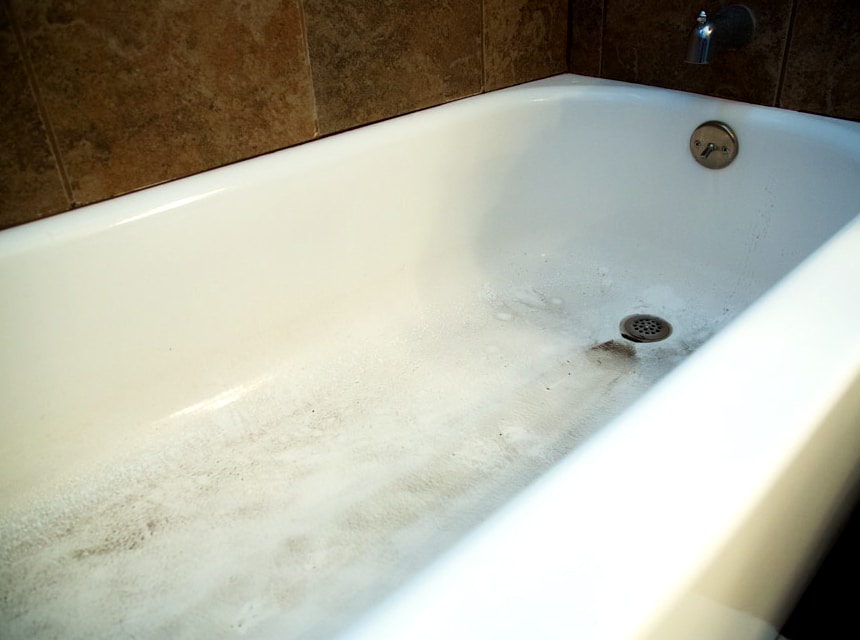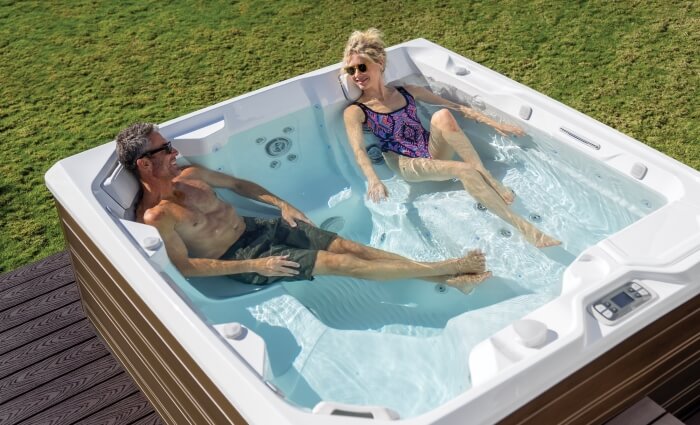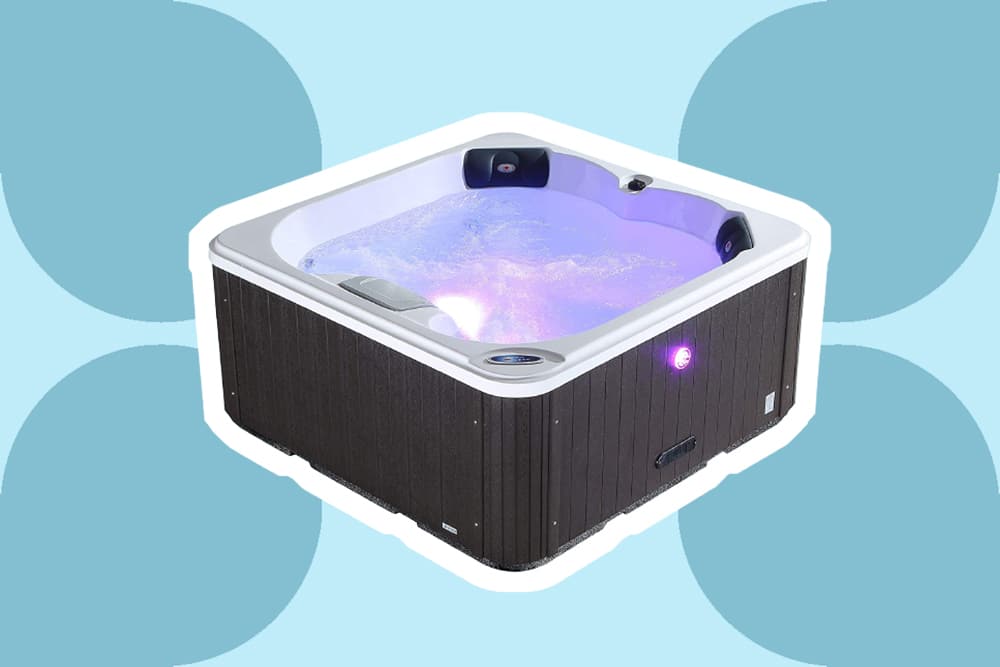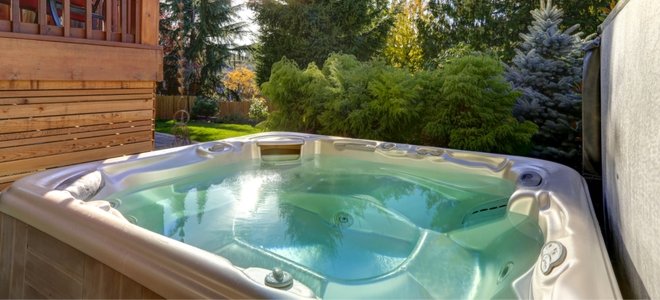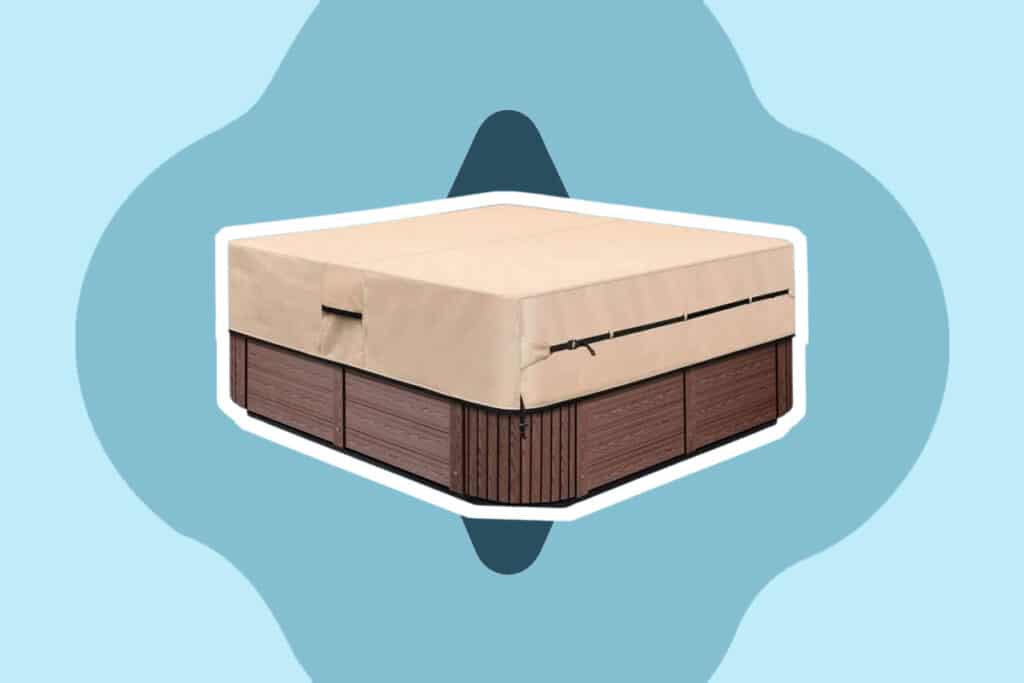

Getting a hot tub is like getting a Sedan. What better way would you unwind and relax after a long day than submerging yourself in hot water and bubbles? It is a great luxury, but just like a Sedan, it requires great maintenance. You have to monitor the water in the tub to ensure its chemical composition remains balanced. Maintaining the right alkalinity is a huge part of hot tub maintenance. A high alkalinity turns the water in your tub green because it reduces the effectiveness of your sanitizer.
Alkalinity stabilizes the pH level in your hot tub by neutralizing the acids present in it. It’s like a pH buffer. The alkalinity in your hot tub or spa should be between 80 and 120 parts per million (ppm), similar to that of a swimming pool. Anything outside this range messes up the chemistry of your tub. Read on to find out what causes alkalinity to rise and how to lower alkalinity in a hot tub.
So many people don’t know the difference between alkalinity and pH. The latter is the measurement of how acidic or basic the water in your hot tub is. A pH scale ranges from 0 to 14. 7 is the neutral pH level, anything below it is a lower pH (acidic) and anything above it is a higher pH level (basic).
The pH level of your hot tub should be balanced between 7.4 and 7.6 where it is neither too acidic nor too basic. A low pH level can cause skin and eye irritation, corrosion of your tub’s components and poor efficiency of your sanitizer. A higher pH level can cause scale build-up poor sanitizer efficiency and cloudy water.
Trusted Source
Beginners Hot Tub Care Guide | Happy Hot Tubs
A comprehensive guide on how to maintain your hot tub. Including information on sanitiser, shock treatments, water changing, filter care and more. All from the experts at Happy Hot Tubs.
www.happyhottubs.co.uk
is some more information about the effects of lower and higher pH levels in hot tubs. Alkalinity, on the other hand, is the capability of the water in your tub to resist acidification. It is like pH’s bodyguard. Essentially, pH and alkalinity are entirely different, but closely related.
The pH of your hot tub is very liable to the slightest change and unpredictability. Any little thing that interacts with it can change its pH drastically. If the water has the correct alkalinity, it will take the hit before affecting the pH.
High alkalinity is rarely an issue for most hot tub owners. Almost every hot tub owner drain and clean their hot tub routinely to prevent the build-up of scale and germs among other things.
Some of the common causes of alkalinity in a hot tub include;
Skin care products and sweat- the lotions, perfumes, sunscreen, and hair gel that you and other people that use your tub increases the pH of the water. The best way to counter this, is to shower before soaking in the tub.
Excess chemicals- adding too many chemicals to your tub in the efforts of sanitizing it can raise your tub’s total dissolved solids. Cleaning and draining your tub every 3 or 4 months can help prevent this issue.
Source of water- there’s a possibility that you have nothing to do with your hot tub’s high alkalinity. You may be living in area that supplies water with high alkalinity. You can ask your local water district to provide you with a water reading for certainty purposes.
Errors when correcting the alkalinity of the tub- you may have a heavy hand when adding substances to raise or lower the alkalinity.
Alkalinity is measured in parts per million. Industry experts suggest that you balance your alkalinity between 80ppm and 120ppm. Anything outside this range would lead to issues with you hot tub’s chemistry.
Testing is a necessary and essential step in lowering the alkalinity of your tub. You can use a testing kit or strips sold in department stores and spa stores online.
Testing is pretty simple. Regardless of the testing method you choose to use, you only need to follow the instructions on the pack.
When you test the alkalinity and find that it is within the recommended range (80-120ppm) you shouldn’t assume that it’s okay and forget about it. You should test it again and again, at least twice every week because it can change drastically. It sounds like a lot, but it’s part of hot tub maintenance.
The regular testing applies to all kinds of hot tubs; from whirlpool and plug-and-play models to standard soaking tubs. The care and maintenance routines may differ across the models but monitoring the chemical balance is pretty much the same.
If you test and find that the alkalinity in your bathtub is above 120ppm, you have no choice but to lower it to 100ppm. There are 2 main methods of lowering alkalinity in your hot tub and they include;
Quick tip: Ensure you wear safety gear with either of the methods. Have your protective eyewear and chemically resistant gloves on before handling the chemicals.
This is the most common method of lowering alkalinity in a hot tub. Sodium bisulfate is a dry acid. It is safe and easy to work with, but storing it requires extra keenness to prevent moisture from entering.
Natural Chemistry remains the most popular Sodium bisulfate. It is a top favorite for many users because it doesn’t irritate the eyes and skin. It is made with all-natural sodium bisulfate and is compatible for hot tub and spas.
So how do you add it to your bathtub?
Step 1. The first thing to do is measure your tub’s alkalinity. You can use a digital tester, testing strips, or a liquid kit.
Step 2. Follow the instructions on the bottle to determine the amount of sodium bisulfate you’ll need for your tub. Generally, 3.5 ounces of acid can lower the alkalinity of a 1000-gallon hot tub by 10ppm. You may need more or less acid depending on the size of your bath tub.
Step 3. Scoop water from the tub using a 5-liter bucket. Fill it up three-quarter-way.
Step 4. Add the sodium bisulfate that you have measured into the water in the bucket.
Step 5. Grab a wooden stick, then stir to mix until all the acid granules dissolve fully into the water. Undissolved acid granules can damage your tub’s shell.
Step 6. Once you are sure all the granules are dissolved, pour the solution into the hot tub. Wait for the water in the tub to circulate the chemical everywhere.
Step 7. Retest for alkalinity. If it still isn’t within the recommended range, repeat the procedure to adjust.
This is another popular option for reducing alkalinity in a hot tub. Muriatic acid is also commonly known as hydrochloric acid. You must gear up well before handling the acid because it can burn skin and its fumes can burn the nose and lungs lining. Your eyes can even get damaged permanently.
Muriatic acid is a popular method of reducing alkalinity in the tub because it is versatile. It kills mold and removes calcium deposits in the tub.
According to many reviewers, the Acid Blue muriatic acid is the best that money can buy. It is made with a vapor reducing technology that reduces up to 90% of harmful vapors typical of old-school muriatic acid. Besides lowering your tub’s alkalinity, it will brighten its surfaces and remove all the stains.
Here is how to add muriatic acid to your hot tub.
Step 1. Turn off the hot tub pump. Muriatic acid works best in still water. Turning off the pump will allow you to lower the alkalinity by a wide margin.
Step 2. Use a testing kit to get the total alkalinity level of your tub’s water.
Step 3. Follow the directions on the bottle to get the amount of muriatic acid you need to lower alkalinity in your hot tub.
Step 4. Get a large plastic bucket and fill it up with water. For every 1 part of the acid you measured, use 10 parts of water. Use a wooden stick to stir the solution.
Step 5. Add the solution to the hot tub carefully. Ensure the solution doesn’t splash on the exposed parts of the tub’s shell as it would get damaged.
Step 6. Give the solution an hour to dissipate throughout the tub.
Step 7. Turn the hot tub’s pump back on, then retest the water. If the alkalinity level is not within the recommended levels, adjust as needed.
Ideal alkalinity is crucial for maintaining a good pH level in your hot tub. A high or low pH level in your hot tub is harmful for you and your tub. Alkalinity is the ultimate pH buffer. Therefore, you must learn how to lower alkalinity in a hot tub. The ideal range of alkalinity is 80 to 120ppm. You have to test continuously: at least twice every week to monitor the chemical balance of your tub’s water.
After using muriatic acid or sodium bisulfate to lower your hot tub’s alkalinity, you have to retest to see if you have achieved the correct balance. If that’s not the case, you have to adjust accordingly. If you lower the alkalinity below 80ppm then you can use baking soda to increase it as suggested by Trusted Source What happens if alkalinity is too high in hot tub? – Mvorganizing.org If the alkalinity of your water is too high, it can lead to an imbalance in the pH value of the water (we’ll be talking more about the difference between pH and alkalinity in a moment). This can result in high levels of calcium in the water, which in turn can lead to scaling, cloudy water and clogged filters. www.mvorganizing.org . Baking soda is highly alkaline, adding just a little amount to the water will raise the alkaline levels.
